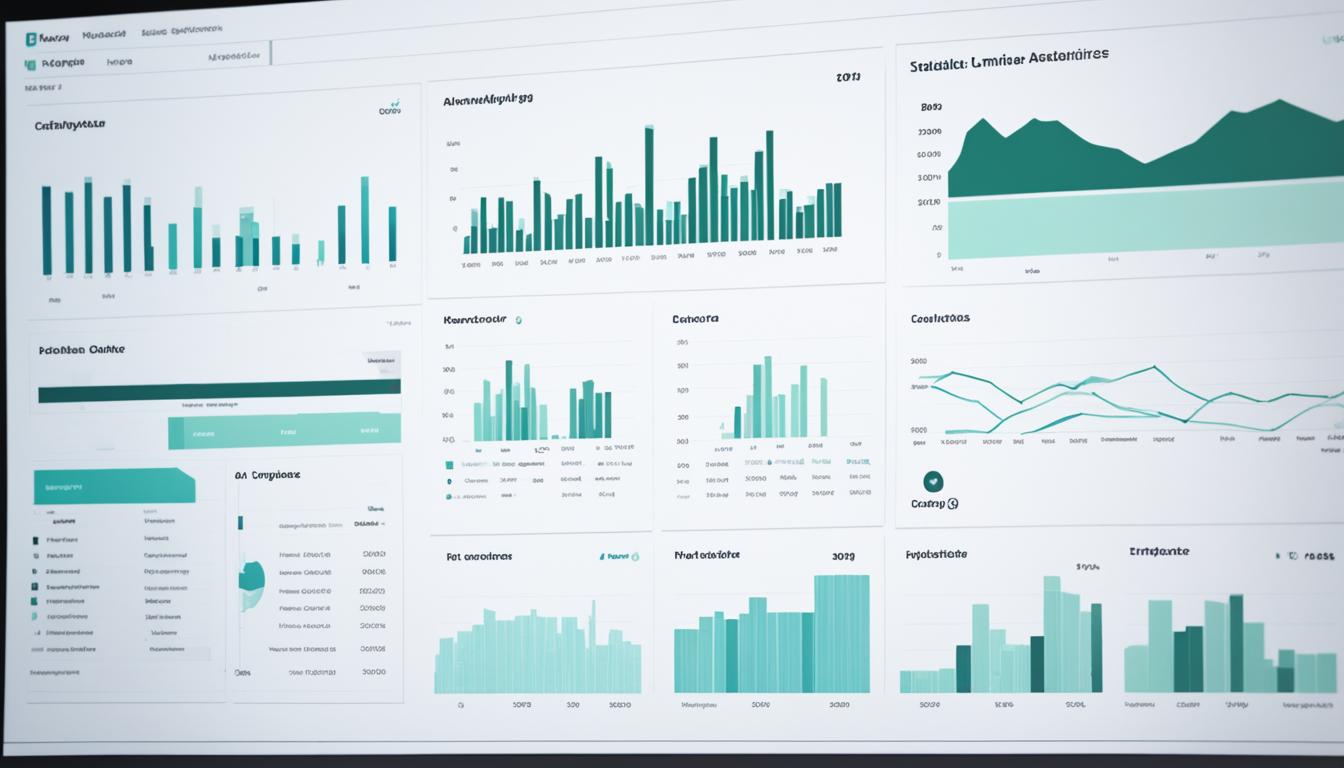In today’s world, companies are always looking for new ways to handle their data. Databricks is a big name in this area. It offers a platform that uses cloud computing and Apache Spark. This makes doing advanced data analytics much easier for businesses.
Databricks connects data lakes with machine learning. This lets companies analyze data in real-time across different areas. It helps turn important insights into quick actions. Databricks also helps teams work together better, making decisions based on data more common.
Databricks is a top choice for companies wanting to manage big data and use artificial intelligence. It helps them deal with the changing world of data analysis.
Key Takeaways
- Databricks combines cloud computing and Apache Spark for effective data analytics.
- A unified platform streamlines data engineering and data science processes.
- Real-time data analysis enhances decision-making across various sectors.
- Collaboration among teams leads to a data-driven culture in organizations.
- Strong focus on big data analytics and AI caters to modern enterprise needs.
Introduction to Databricks
Databricks was created by the Apache Spark team. It’s a powerful tool for data science that makes data processing and analytics better. It works well with machine learning, helping companies use their data fully. It also has a team-friendly environment that makes working together easier and encourages new discoveries.
Databricks supports many programming languages like Python and SQL. This makes it useful for a wide range of data experts. It’s a great choice for companies looking into advanced analytics. With Databricks, handling big data becomes easy, offering a solid base for quick insights and smart decisions.
Key Features of Databricks Data Analytics
Databricks is a leader in advanced data analytics. It offers powerful tools for easy collaboration and strong processing. It uses the latest technologies to make complex tasks simple. This makes it great for teams at all skill levels.
Unified Analytics Engine
The unified analytics engine at Databricks makes data processing smooth. It uses Apache Spark to boost performance and ease of use. This means advanced analytics tools are now available to both experts and beginners.
Teams can easily handle big datasets and perform analyses without getting stuck on technical issues.
Collaborative Workspace
Databricks has a collaborative workspace that boosts productivity. Users can work together in real-time using notebooks. These notebooks let you write code, document, and visualize data all in one place.
This setup lets many users work on projects together. It encourages innovation and teamwork in data projects.
Benefits of Using Databricks for Advanced Analytics
Databricks is great for companies looking to boost their data analytics. It’s known for its scalability and performance. These features help tackle today’s data engineering challenges. Companies can use it to make their data processing and analysis better.
Scalability and Performance
Databricks makes it easy to handle changing workloads. You can add more resources as needed without losing speed. This means companies can work with huge amounts of data quickly, giving them faster insights than old methods.
Seamless Cloud Integration
Databricks works well with big cloud services like AWS, Azure, and Google Cloud. This makes managing data easier and keeps it secure. It also helps teams work together better. This leads to more productivity and new ideas in data engineering.
Databricks Data Analytics: Tools for Data Engineering and Processing
Databricks has powerful tools for data engineering that make turning raw data into insights easier. These tools help set up dependable data pipelines. They keep data quality high and support analysis for smart decisions.
Delta Lake is a key feature that offers ACID transactions, schema enforcement, and data versioning. This means users can handle big data without losing accuracy. As data use grows, reliable data management is crucial.
Integrating machine learning in Databricks is easy, letting users build, deploy, and manage models on the platform. This makes the data science process smoother. It helps teams go from preparing data to training models quickly. The platform’s ease of use boosts teamwork and leads to new solutions in many areas.
Leveraging Machine Learning with Databricks
Databricks is a powerful tool for those wanting to boost their machine learning skills. It supports many machine learning frameworks. This lets data scientists pick the right tools for their projects. This flexibility helps teams to be creative and build strong models easily.
Machine Learning Frameworks
Databricks supports many machine learning frameworks, like TensorFlow, PyTorch, and MLlib. These frameworks are great for building and testing models. They let users use advanced algorithms well. Databricks makes the process smooth, from getting the data ready to training and checking the models.
Deployment and Monitoring of Models
Putting machine learning models into action is key. Databricks makes this easy with tools for easy use in production. It has features for keeping models running well over time. Also, it has tools for monitoring models to keep an eye on how they’re doing. This helps teams make changes quickly as data changes.
Data Visualization in Databricks
Databricks is great at data visualization. It has tools that help users make analytics dashboards that are both engaging and informative. These tools make complex data easy to understand by turning it into interactive visualizations.
The platform works well with libraries like Matplotlib and ggplot. This makes it easy to create beautiful graphs. Users can spend more time understanding the data and less time on technical stuff. They can also find hidden patterns and trends, which helps in making better decisions.
Databricks lets users customize their visualizations. This makes the experience better and helps data to have a bigger impact. By focusing on important insights, teams can use data to make better decisions. This helps everyone make choices based on solid data.
Conclusion
Databricks offers strong solutions for companies wanting to boost their data analytics and management. It has an integrated platform for big data and advanced analytics. This lets users make the most of their data.
It helps streamline workflows with a focus on teamwork and growth. Teams can use the cloud features of Databricks to fully use its analytics power. This makes sure insights are easy to get and use.
Using Databricks improves how companies manage data and helps them in their digital changes. With these tools, companies can meet their goals and stay ahead in the fast-changing digital world.
FAQ
What is Databricks data analytics?
Databricks is a platform that uses Apache Spark for data engineering and science. It helps with real-time data analysis. This makes it easier for companies to make informed decisions.
How does Databricks enable collaboration among data professionals?
Databricks has a workspace for everyone to work together. Data engineers, scientists, and analysts can share ideas and work on projects together. This helps in making better decisions with data.
What are the benefits of using Databricks for machine learning?
Databricks makes machine learning easier by supporting frameworks like TensorFlow and PyTorch. It helps in building, deploying, and checking models on a large scale. This means quicker updates to data changes.
How does Databricks support data visualization?
Databricks has strong tools for data visualization. Users can make interactive dashboards and real-time analytics. They can also use libraries like Matplotlib and ggplot for detailed graphics of complex data.
What is the Unified Analytics Engine in Databricks?
The Unified Analytics Engine makes Apache Spark easier to use for everyone. It lets teams work together on data projects in one place. This makes data processing simpler.
Can Databricks handle big data analytics?
Yes, Databricks is great for big data analytics. It lets users work with huge amounts of data in real-time. This helps companies understand their data better and reach their goals.
What are the data engineering tools available in Databricks?
Databricks has strong tools for data engineering, like Delta Lake for reliable pipelines. It has features for data safety, like ACID transactions and data versions. This keeps data safe throughout its life.
How does Databricks support cloud computing?
Databricks is made for the cloud and works well with AWS, Azure, and Google Cloud. This makes data management and security better. It also helps teams work together more easily.



